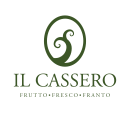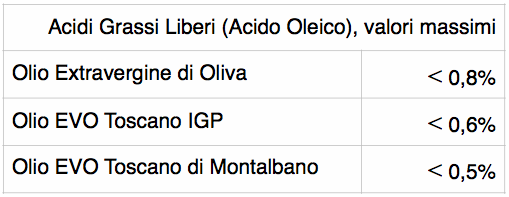Have you ever tasted natural olive oil?
We are olive growers, we produce oil from our trees on a small farm, Il Ronco, situated on the hills of Montalbano in Tuscany. We love natural, authentic and genuine oil and we endeavour to make it with traditional methods without any help from chemicals.
Our extra-virgin olive oil ‘Il Cassero’ is natural, thanks to the biodiversity of the olive grove which protects, feeds and pollinates olive trees. This way no weedkillers nor pesticides are used.
The wild plants are left to grow free as much as possible, so that every type of flower, bush and fruit tree can welcome insect life and small animals useful to the balance of the olive grove ecosystem. The bees, for instance, along with the wind, play an important role in the pollination of olive trees, reaching all the flowers and allowing the ideal fertilization of a greater quantity of olives. The wind, in turn, has led us to plant the pollinating olive trees (such as the Pendolino) windward and in proximity of the estate boundaries.
Today, on the contrary, olive trees are very often treated artificially against parasites and to stimulate production. Chemical treatments not only destroy parasites but our natural allies as well and neutralize the defences of the olive grove.
Why? In order to guarantee consistent and high yields. But in this way, over the long run, the olive grove gets depleted, and its fruits become less nutritious.
Whereas we have chosen to use the resources that the wealth of the environment offers us, even if this means not having the certainty of picking olives every year.
Respecting biodiversity has been our top priority because we prefer to produce natural and authentic oil.
How to recognise olive oil
There’s a lot of superficial information on the oil labels. In fact, when the clients read the labels on the various oil bottles or cans, they receive only general information that doesn’t allow them to judge and choose with full awareness.
Let’s have a look at the labels
According to the current law, the label should report the origin of the oil, in particular, if it is:
– 100% Italian (or “produced in Italy”, or “Italian produce”)
– Coming from the European Community
– Coming from extra-European countries
The bottler, who also pastes the labels, whether he’s the producer of oil or not, is not bound to report the origin of the olives.
Therefore, the labels do not specify if the oil is produced with locally grown olives.
An oil that is 100% Italian can, in fact, be:
a) produced with olives coming from all over Italy
b) bottled with a mixture of Italian olive oil.
There is nothing wrong with it, but it is only 100% Italian oil.
Therefore consumers know almost nothing concerning the oil inside the bottle they have bought.
Indeed, everything may be possible, even if it is not written on the label.
It may be true that a locally produced oil has only the name of the producer who is local, or the place of bottling that is local.
The origin of the olives, instead, is very important, because olive oil is obtained by the pressing of olives, without any further phase of processing. It does not undergo any processing, fermentation, or cooking, but it is only a transformed fruit which is immediately edible. In fact, the faster process of transformation of olives determines the quality of the product.
It is not compulsory to report the date or the year of production on the oil labels!
The only reference for consumers is the sell-by date, that is, the date by which it is preferable to use the oil: 18 months from bottling (not from pressing!).
But who is aware of these things? A bottle of olive oil filled up a short time before may not contain the oil from the latest harvest.
Therefore, it is important to report the year of harvesting and production on the label, especially when all the olives (and all the extracted oil) come from a specific olive harvest, because, if there is no reference, the oil inside the bottle may date back to earlier years.
The oil industry of course, may benefit from being able to omit a clear traceability.
How can we judge, and choose, if we do not know the origin of the olives?
The real oil supply chain
Pressing means breaking: the olives are reduced to a pulp, composed of the drupe and the stone, which also gets broken. Its consistency helps the extraction of oil and nutritious substances of olives.
The mill in charge of pressing (oil mill) shall notify SIAN (National Agricultural Information System) about the origin and quantity of olives processed every day, their destination and the type of bottling of the oil produced. It is odd to learn that only 200 litres of oil per olive grower can be destined to private use, notwithstanding the number of olive trees owned. The remaining part has to be put on the market hence it must be traced.
SIAN, therefore, knows the route of olives from the olive grower to the bottle. The consumers don’t. Beyond the above mentioned macro-area of origin consumers can only gain the following information by the label:
– The classification of oil (Extra-virgin olive oil, olive oil, oil from olive pomace)
– The producer (of the oil, not of the olives!), the bottler or the brand
– The year of production, if clearly reported
– The sell-by date, or better the shelf life
For this reason, those who produce premium oil should indicate what the law does not include on the label, give more useful information to consumers and help them distinguish, appreciate and stimulate their curiosity.
Tuscan oil
From the Appenines of Pistoia to Lunigiana, from the Florentine and Casentino hills to those of Chianti, from the foot of Mount Amiata to Maremma, from Senese clay soil to Val d’Orcia, from Montalbano to the Tyrrhenian coast, the olive tree grows everywhere but with different characteristics. The microclimate, altitude and cultivar (the olive varieties) make the differences, found in the smell, taste and colour of oil, as well as in its nutritional and antioxidant values.
Tuscany has the greatest number of cultivars in Italy (about 100) and therefore it is the region better suited to produce multivarietal olive oil, that is extracted from a mix of olives of different varieties.
The qualities of Montalbano oil
Montalbano is a mountain range that branches out from the Appenines at the level of Serravalle Pistoiese and stretches as far as Florence. The South-western side on which our olive trees are grown is exposed to the sun until sunset and to the sea breezes. Rich with olive groves and woodland, it is made of stone terraces and sloping ground. It still has an agricultural and entrepreneurial tradition, that includes olive growing.
Montalbano oil is also certified by the regulations of the extra-virgin olive oil with the protected geographical indication and the additional geographical designation of “Toscano di Montalbano”.
The chemical qualities of the extra-virgin olive oil of Montalbano are many and much better than those of a general extra-virgin olive oil.
Let’s take a significant value, acidity:







